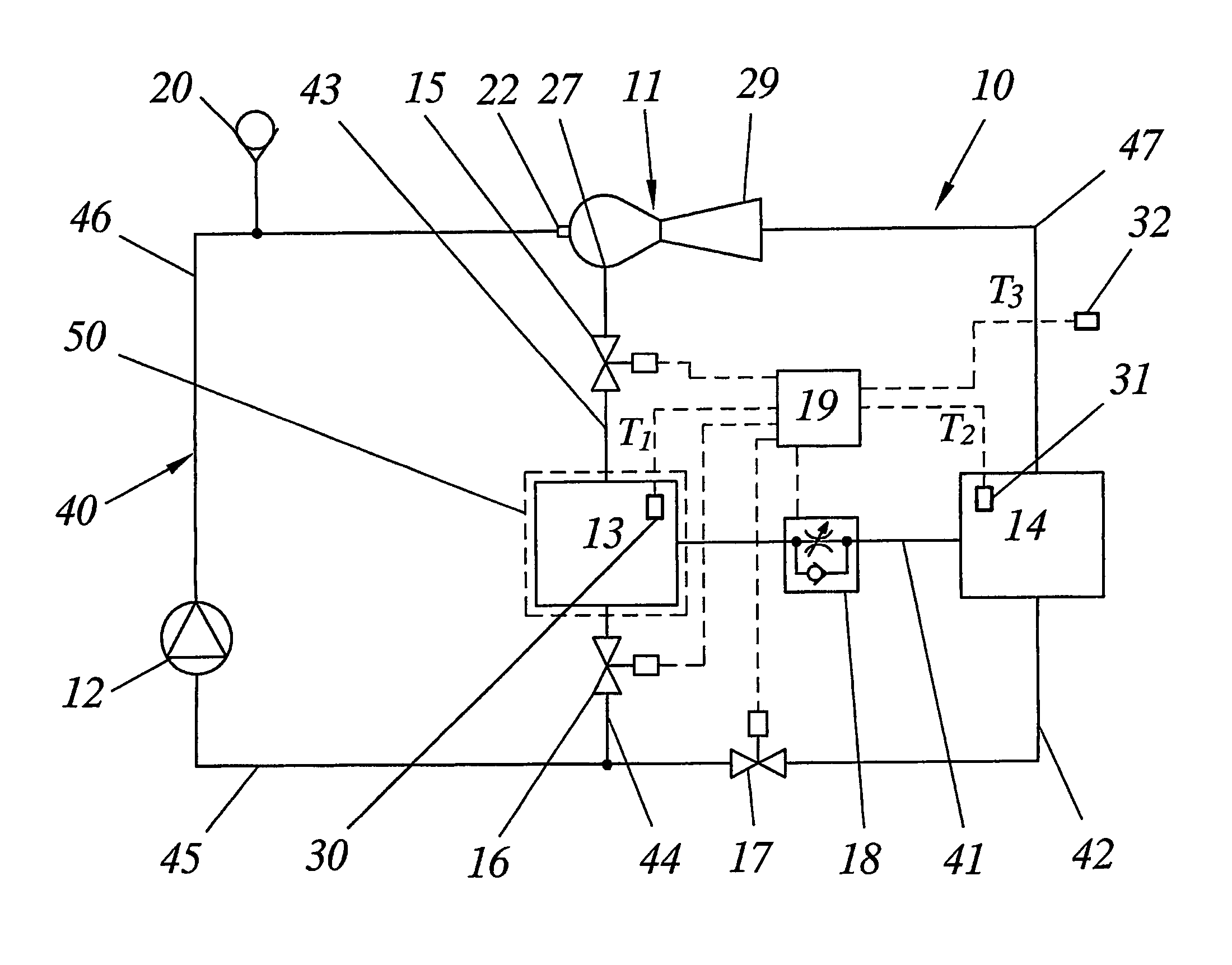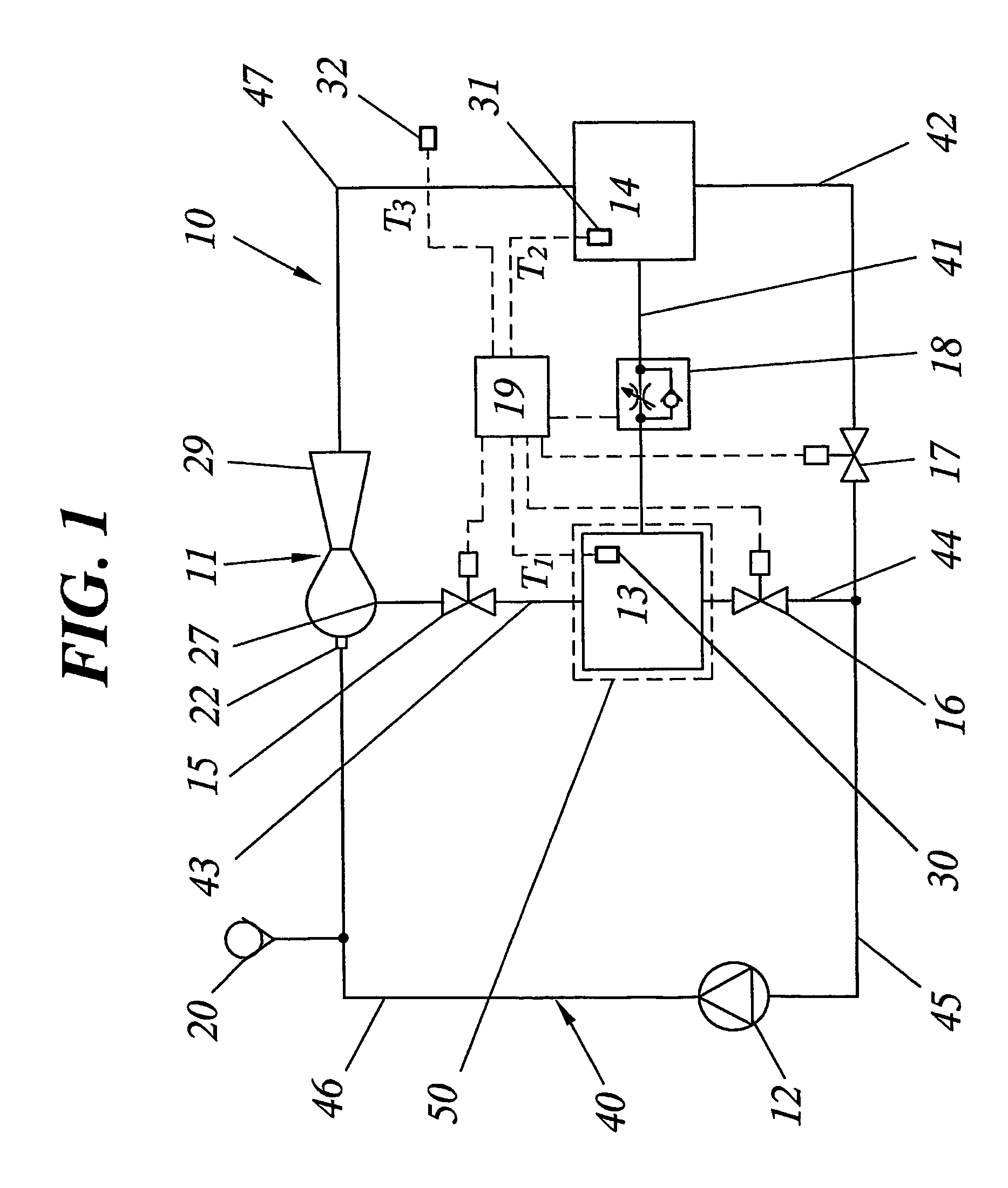Cabinet cooling
a technology for cabinets and cooling cabinets, applied in the field of cooling cabinets, can solve the problems of increasing the complexity of the ejector having moveable parts, poor performance, and no real breakthrough, and achieve the effects of reducing the number of cooling cabinets
- Summary
- Abstract
- Description
- Claims
- Application Information
AI Technical Summary
Benefits of technology
Problems solved by technology
Method used
Image
Examples
Embodiment Construction
[0033]The basic principles of the invention shall now be described by means of an embodiment of a cooling system 10 for performing the suggested method of cooling a cabinet 50 containing heat dissipating electronic components. The electronic components may be in the form of printed board assemblies PBA, see FIGS. 5A and 5B, or others. Within this specification the expression “printed board assembly” refers to a printed circuit board with modules and / or components mounted thereon. The general layout of said system is schematically illustrated in FIG. 1. The cooling system 10 is closed or hermetic and filled with a liquid cooling medium that may also be referred to as a refrigerant. Suitable cooling mediums for use with this system are e.g. water, alcohol, ammonia, benzol or other environmentally friendly medium having a vaporizing temperature of 25–100° C. at a slight subatmospheric pressure or at atmospheric pressure.
[0034]The system comprises a condenser / heat exchanger unit 14 prov...
PUM
 Login to View More
Login to View More Abstract
Description
Claims
Application Information
 Login to View More
Login to View More - R&D
- Intellectual Property
- Life Sciences
- Materials
- Tech Scout
- Unparalleled Data Quality
- Higher Quality Content
- 60% Fewer Hallucinations
Browse by: Latest US Patents, China's latest patents, Technical Efficacy Thesaurus, Application Domain, Technology Topic, Popular Technical Reports.
© 2025 PatSnap. All rights reserved.Legal|Privacy policy|Modern Slavery Act Transparency Statement|Sitemap|About US| Contact US: help@patsnap.com



